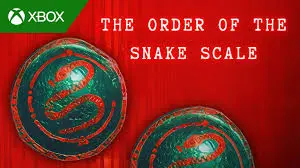Once upon a time (way back in 1993 to be precise), there was a PC game called X-Com: UFO Defense. In this game, players commanded a top-secret world agency in charge of setting up bases, researching technologies and fighting off an alien invasion. People loved it. Years later UFO Aftermath arrived. It was not as well loved. Now, the next installment, UFO Aftershock, has landed on our planet, begging the question: is there really intelligent life on other plan?err, I mean: was there a need for another UFO game?
UFO: Aftershock picks up where Aftermath left off. Players are in charge of a Laputa (aka: an orbiting space station) that can be moved all around the planet to tackle global control missions. Various factions (cyborgs, psionics, humans, and maybe a few surprises) have control over the territories of Earth, and must be convinced or forced to surrender their lands. Once they do so, their precious resources can be utilized in the research and manufacture of technologies. The eventual goal? Kicking E.T.?s booty once and for all.
UFO: Aftershock?s global view, with its base construction, manufacturing and research tools, is straight-forward enough, but the tactical combat aspect of the game runs on a real-time setup using somewhat turn-based Strategy-game rules. The action can be paused at any moment as well as run at various speeds. Squads can be issued sequential commands while the game is paused or running (go here, shoot that, aim, wait, heal that guy, etc.) If this sounds a bit confusing, we have to admit that it is, at least at first. Once players have the hang of this tactical engine, however, the missions are pretty fun?for a while.
What sadly becomes evident after about six hours of game play is that repetition and length are king in this attempt to unite the globe under one banner. Missions start to become a bit of a drag, and the difficulty ramps up quite steeply. Many players will likely be forced to reload from saved games often. Worse, research and production seem relatively fruitless until long after the joy of combat has ended.
After combat, soldiers (who are recruited from the various factions) who have leveled up can improve one attribute, and doing so grants them better skills. Soldiers may undergo up to three training sessions throughout their career to specialize and therefore enhance their abilities in various areas (rocket launchers, sniper rifles, scouting, medic, etc.) This addition makes the game feel more RPG-ish and serves to give players a little more attachment to their otherwise disposable soldiers.
Aftershock?s graphics are above average, but carry steep requirements for a game that will only ever show a handful of units at a time. Still, when the combat gets heavy, players will probably find that switching to slow-mo mode will be beneficial for keeping the casualties low, as well as helping with frame rate issues. The landscapes in Aftershock have a nice variety of prefab, randomly selected objects and dilapidated buildings, but even these start to look old once the seemingly endless number of missions continues.
One gripe about the environments (which relates directly to game play) is how tight some of the indoor areas are. I found myself, in times of desperation, camping several shotgun-toting soldiers in a doorway with medics standing behind them, waiting for the enemy to find me. Similarly, in outdoor situations, it sometimes was easier to place each soldier in a defensive stance and merely wait for the enemy to stumble upon them, rather than risk being taken by surprise while scouting in the open. This almost exploitive technique was a disappointment to discover, as it was evidence of imbalanced game play.
Aftershock?s music is haunting, and seldom felt repetitive. Soldier comments were only slightly obnoxious and gunshots, explosions and the sounds of aliens dying were solid, loud and realistic-sounding.
At its core, the game is almost solid. Good graphics, fun combat sequences, and the slowly rewarding element of research and development have potential for a real winner. However, the game is just simply too long and repetitive for its own good. To recommend this game is a tricky matter. If you never played the original X-Com, and can deal with that title?s slightly antiquated graphics, then you should try and get a hold of it to truly experience the full potential of the X-com franchise. If you?re one of those players that just couldn?t get enough of X-Com in the nineties, however, Aftershock offers another chance to delve into that universe.
The scores:
Gameplay- 7 Fast-paced, with lot?s to do. In fact, there ends up being too much, most of it stuff that gets old and repetitive by game?s end.
Graphics- 8 There is an impressive level of detail on characters and models. Levels are attractive and have ample variety. Even powerful systems might experience mysterious frame-rate hits, possibly due to high poly counts.
Sound- 8 Nothing to complain about here. Sometimes the soldiers seem a bit snappy, which gets annoying. The quality of the game?s sound and music is excellent, however. Tracks are catchy and help set the mood.
Value- 5 The game has enough depth to keep gamers playing for a while. Unfortunately, the game really starts to feel repetitive after the first few hours- few players will likely have the stamina to see this game through to the end.
Curve- 7 The fact that this game is from a smaller developer swings the curve score up a bit. In the end, however, Aftershock suffers from any comparison to its predecessors in the franchise. A bit of unique content would have gone a long way here. Existing fans of the series and newcomers with a taste for RTS should find something to entertain themselves with here.
President & CEO














Leave a Reply